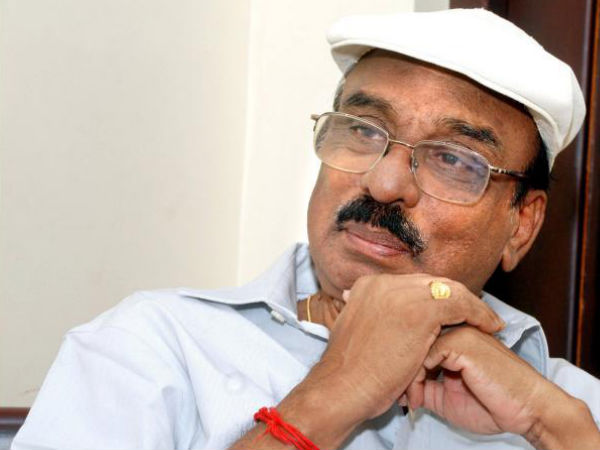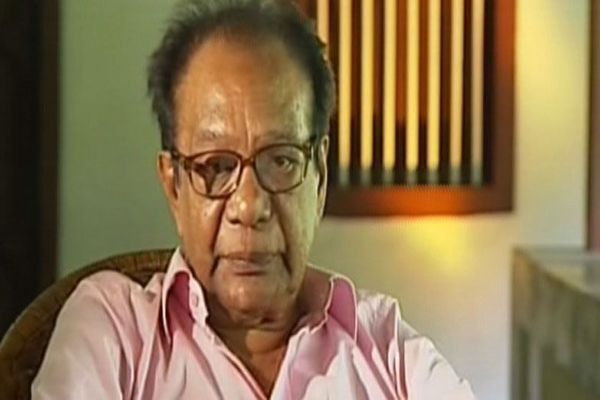18/05/2017
The 70s marked a period of sizzlers in popular Malayalam cinema, so the gossip went. This may sound a bit sacrilegious to cine bhakts who see the period as the golden age of radicalism in politics and culture, of experiments in form, and of committed explorations into the cinematic medium by masters like Aravindan, Adoor Gopalakrishnan, K.P.Kumaran, John Abraham, P.A.Backer, and K.G.George among many others. But histories are layered and nuanced. This decade also happened to witness the Malayalam popular cinema grappling with certain patterns of spectatorship and voyeurism, which at some level, was also a serious engagement with the politics of sexuality.
Our films dared beyond those reassuring yarns of family relationships, sacrificial love and commitment to delve into the uneasy zones of undefined instincts, repressed female desire, phobias, curiosities, tabooed love, sex work and pre-marital sexual adventure, a trend which was rumoured to be lending a black mark to Malayalam cinema in the larger Indian context. Avalude Raavukal was a landmark of that era. Translated into English as Her Nights, it showcased Malayalam cinema as revelling in titillating, libidinous narratives; to the extent that it even created an aura of disrepute around Malayalee girls in the northern parts of India. Or so my friends and cousins in Delhi used to tell me reproachfully in the late 70s. Scripted by Alleppey Sherrif and directed by I. V. Sasi, the film was hailed as a bold piece of cinema much later, woven around the hapless predicament of a teenage girl thrown into prostitution. Sherrif-Sasi combination went on to give us many films underscoring our ambivalent positions on sexual morality, patriarchal double standards and middleclass hypocrisy.
Alinganam (1976), starring a very young Sridevi in the lead role was yet another offering from this duo and I remember feeling extremely troubled by it as an adolescent spectator, while taking sneak peeks into the film. It was being screened in a community auditorium in our residential colony at that time. My parents would not have knowingly taken me for the film to a regular theatre as it played rather explicitly around the grey zones of adolescent vulnerability, sexual curiosity and a total lack of openness in sexual matters in those times (but are the times any different today?). I distinctly remember boys and girls being shooed out of the hall by ‘respectable’ uncles and aunties and we trooping out in bewildered indignation. The film begins by giving us the impression that it is a ‘girl’ film with an enchantingly young Sridevi (yes, the very same artist who goes onto become the Bollywood diva later) clad in a short frock scampering after butterflies. But very soon things take a sudden sinister turn. That is when the teenage girls are hustled out of the hall.
Vinod (Vincent) meets a stranded mother (Ragini) and daughter (Sridevi) most accidentally on a picturesque, winding hilly road of a tree plantation, offers a lift and within a day of enjoying their hospitality, promptly falls in love with the daughter who is a graduate student. Bindu’s skimpy, clinging attire meant to highlight her innocent voluptuousness surprised me then and still does, as it is not a dress we commonly associate with a Kerala college campus. She wears thigh-long short dresses and sleeveless tee-shirts, gloriously unaware of the seductive impact she has on others. Sridevi’s facial expressions ooze a naiveté, accentuating her sensuousness, and give a foretaste of her arresting performance in Sadma in the eighties. An avaricious camera feasts on her body which constructs not only a character but also the image of a young actor. The objectification is obvious and the ideological implications of the heightened sensuality unravel very soon.
Vinod, the rich heir of a tea estate owner, gets to marry her much against the will of his father (Bahadur) who wants his son to marry his psychiatrist friend’s daughter Raji (Ranichandra). A disappointed Raji, who is a doctor herself, cheerfully rises to the occasion and is seen to deal with the situation with admirable maturity and composure. It is to be noted that there was a time when Malayalam cinema teemed with women doctors/professionals who played a pivotal role in the progression of the plots. The nubile figure of the heroine has to be seen in the context of diverse female characters surrounding her in the form of her mother, mother-in-law, doctor, maid and the middle-aged purveyor of indigenous therapy, none of whom are sexualised entities. I feel this complicates our standard notions of objectification of the female body and should be making us rethink our pet theories of stereotyping in cinema on more complex lines.
As initial setbacks recede and the marriage settles down into a routine domesticity, cracks appear in the form of Bindu’s psychic disturbances during moments of sexual intimacy with her husband. A past trauma surfaces, leaving her screaming, sweating and invoking inscrutable images from the darkened interiors of memory. This turns out to be the crux of the narrative, the mystery that waits to be unfolded. As the family friend and psychiatrist (handled with a brilliant sense of control by K.P.Ummer) offers to help out in healing Bindu’s mind, more uncomfortable secrets roll out of the cupboard. A teenage slip, an accidental pregnancy, a crude abortion somewhere in the remote interiors, the false pride of a mother who leaves her daughter in the hands of strangers at a crucial moment -- all these snowball into a trauma that has been suppressed, but surfaces with the re-emergence of desires. Once the husband gets to know of the premarital pregnancy, he becomes the swaggering ‘male’ he is expected to be and refuses to accept her .But the film surprises us with everyone around him begging him to forgive and forget as it was an error born out of innocence, not knowledge. Which begs the question, what if it was an act of knowledge? The melodrama rises to a crescendo and explodes in a dramatic gunshot, killing the man responsible for the past trauma --none other than the psychiatrist’s son Ramesh (Raghavan).
I.V. Sasi
Of course we are all waiting for this flashback to the scene of seduction and original sin. The sequence unfolds against an Edenic backdrop of waterfalls with Bindu in her ‘customary’ short dress shown amidst a windy field of virginal flowers. One thing leads to another and very soon she is tearing a piece of cloth from her own dress making it shorter by several inches to bandage a cut on Ramesh’s head, thus causing an adrenaline rush in the injured young man.
That is where the camera speaks a hundred words without any censoring word being uttered by any character in the film. The camera follows the eye movement of Ramesh to zoom in on that part of her thigh, steamily exposed after the cloth has been ripped off. Implied is the young woman’s complicity or rather the complicity of her dress code in her own adolescent slip. And she is a willing participant in the moment and is seen to enjoy and explore her desire as a very natural response. The film is conscious of its own ambivalence here. But the dominant moral voice of the film exhorts the hero to take her back as she was too young when the ‘slip’ occurred; and the hero’s father lashing at his son with the nailing question: “How sure are you that you have not erred or slipped in your life so far?” resolves the contradictions in Vinod.
By the current standards of gender sensitivity which we have built up laboriously over many decades of movie watching and hair-splitting theorising, we shouldn’t be exonerating the sly patriarchal ideology that is knit into the film’s plotting. There is a curious moment when Bindu goes on repeating “njaan thettu cheythittilla” (I haven’t done any mistake) which should’ve been the ethical peg of the film from a gender-sensitive perspective. But we are still on the threshold of momentous challenges to our moral presumptions and not yet ready to make fundamental perspectival shifts. (But then are we any better now?)
So when Bindu has a fainting spell (during which the errant lover, Ramesh, commits suicide and forms a temporary solution to the dilemma) and awakens to inform us all that “I have realized all my faults. I understand why Vinod cannot accept me. I am bad,” one can see how the screenplay is trying to wrestle with certain moral codes. She is made to say this so that Vinod can, in a fit of contrition and charity, call her back and they lock themselves in a deadly embrace which should justify the title Alinganam.
Alleppey Sheriff
And I am reminded of more continuities in Malayalam cinema. Revisiting Alinganam took me to the recent memories of watching Roshan Andrews’ Notebook which I admired for its candid acceptance of teenage sexuality as a most natural expression and the medical and moral traps for girls who are not empowered to take charge of their bodies in contexts where abortion is illegal and implies a moral slur on the woman. Even more menacing is the lack of space between parents and children to discuss issues of intimacy leading to furtive remedies and fatal endings. And in the early 21st century, neither the filmmaker nor the audience are in a mood for easy answers.
One can nit-pick endlessly about Alinganam’s conception, execution, and melodramatic dialogue rendition. But given the constraints of the times and its rigid notions of gendered behaviour, should not we be taking note of the fact that our film industry was negotiating with our moral contradictions in its own way? Should we also not be a little more proud of a director, a script writer and a producer who were ready to launch into such a dicey theme with conviction? Students of popular cinema need to engage such cultural texts for more reasons than one.



